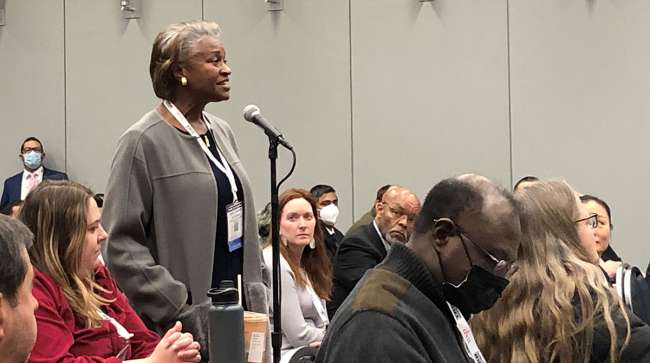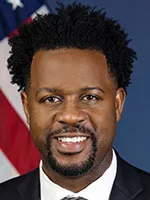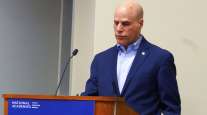Senior Reporter
IIJA Implementation Is Ongoing Process, DOT Official Says

[Stay on top of transportation news: Get TTNews in your inbox.]
WASHINGTON — Distributing funding as part of the implementation of a $1.2 trillion infrastructure law is an ongoing process capable of assisting stakeholders over the coming years.
Nuria Fernandez, leader of the Federal Transit Administration, ensured transportation stakeholders and state agency officials that plenty of opportunities remain for accessing the resources, benefits and funds linked to the massive infrastructure law.
The head of the country’s transit operations was addressing attendees at the annual meeting of the Transportation Research Board on Jan. 10.
“We have year one under our belt,” the transit chief said in reference to the Infrastructure Investment and Jobs Act, enacted in the fall of 2021. “We still have four years to go with the funding. So it doesn’t all have to happen now.”
“Our doors are open,” she continued. “We have really built up our public engagement and listening to not just those who are grant recipients, but to those who are affected in communities across this nation that feel that they have not been heard or they want to see things different.”
Referring to the law as a “once-in-a-generation” funding vehicle, the administrator added, “We want to get it right, but we don’t want to be first and fast. We want to be there and get it right so that we can build a program that continues to be authorized and funded.”

Hampshire
The leadership at the Department of Transportation has kicked off the year by announcing myriad funding programs for freight and transit connectivity projects, as well as safety grants meant to improve travel across mobility corridors. Already billions of dollars approved by the IIJA have been distributed to agencies around the country.
Specific to safety, a goal from a recent policy road map unveiled by DOT proposes: “We must strive for zero transportation system fatalities. Zero is the only acceptable number of deaths and serious injuries on our transportation system. Achieving the vision of zero fatalities will take effort from across society to change how we design and operate our transportation system.”
“People no longer accept a high risk of fatality or serious injury as a cost of mobility. Social norms have changed. Impaired, risky and distracted driving is no longer accepted, and everyone wears a seat belt,” according to the department’s research, development and technology strategic plan, released Jan. 11.
“We recognize that the work of research, development and technology deployment takes collaborative effort across the public, private, academic and nonprofit sectors,” Deputy Assistant Secretary for Research and Technology and Chief Science Officer Robert Hampshire said in a statement accompanying the plan’s release.
“In this time of rapid change and experimentation, research must drive the learning necessary for the public sector to keep pace with technological advancement and to adapt to evolving socio-economic needs,” Hampshire went on. “By providing a vision for a future transportation system made possible by research, we seek to foster collaborative innovation to create a better transportation future for all.”
Want more news? Listen to today's daily briefing above or go here for more info
This month, the Federal Transit Administration announced a notification of funding availability to assist economically disadvantaged regions. The $20 million in grants stem from the agency’s “Areas of Persistent Poverty Program.”
“At a time when transportation is the second-largest household expense for most American families, it is more important than ever to ensure that everyone has access to affordable public transit,” Transportation Secretary Pete Buttigieg said on Jan. 9. The secretary was among the keynote speakers at the TRB conference. “The new resources we are announcing today will make it easier for people in our most underserved communities to access jobs, school, health care and other vital services.”




